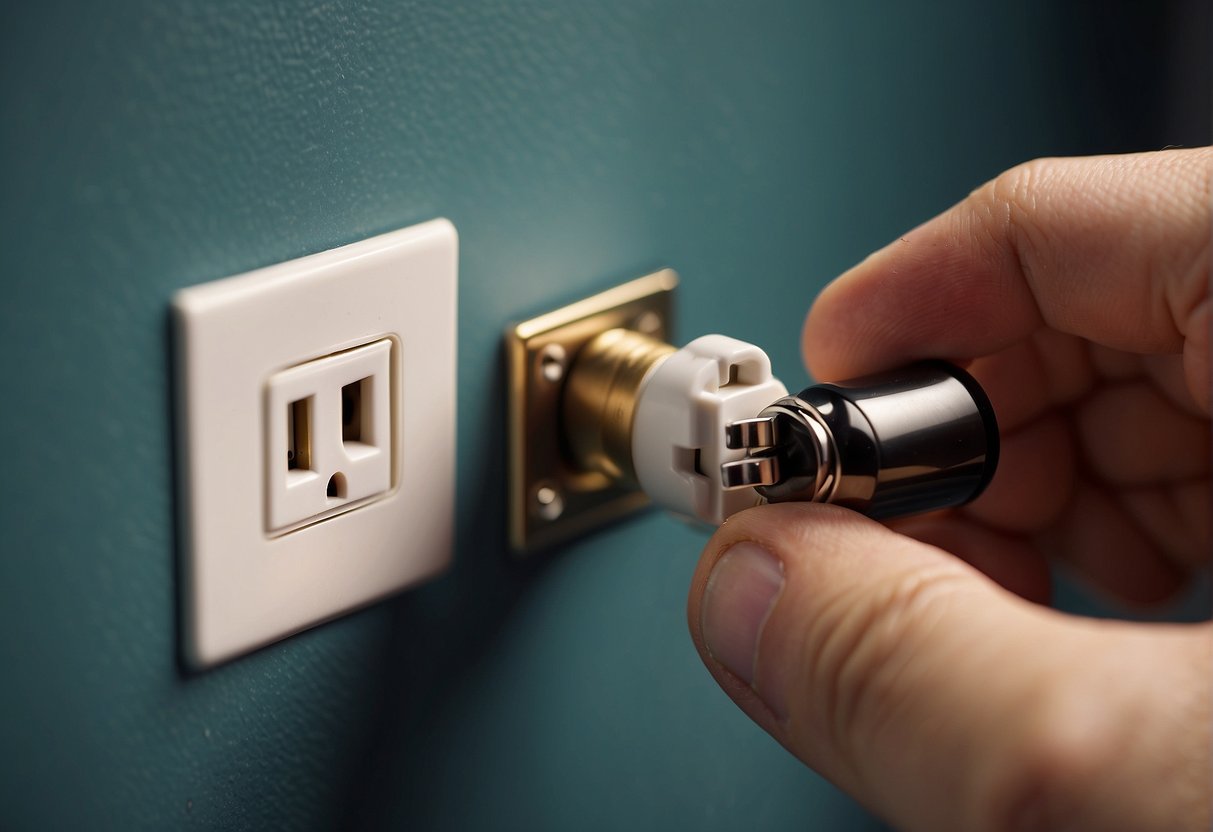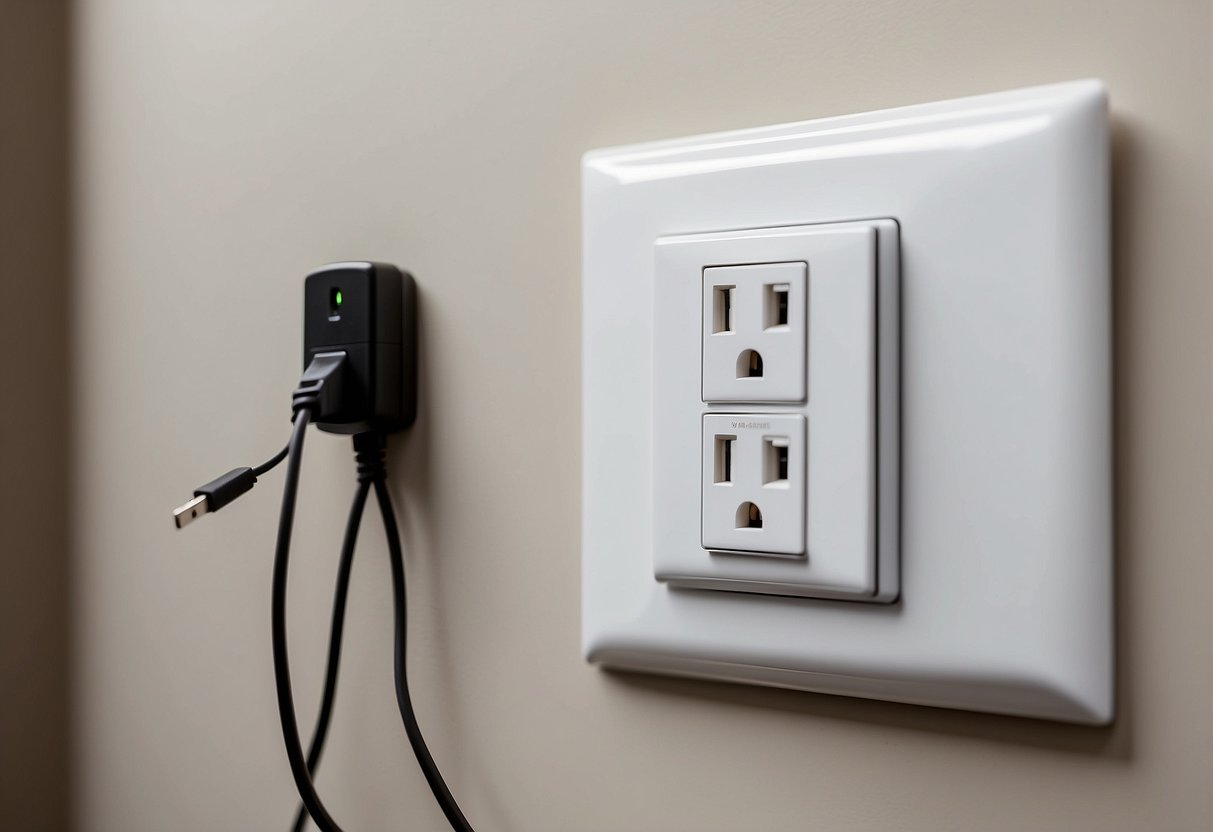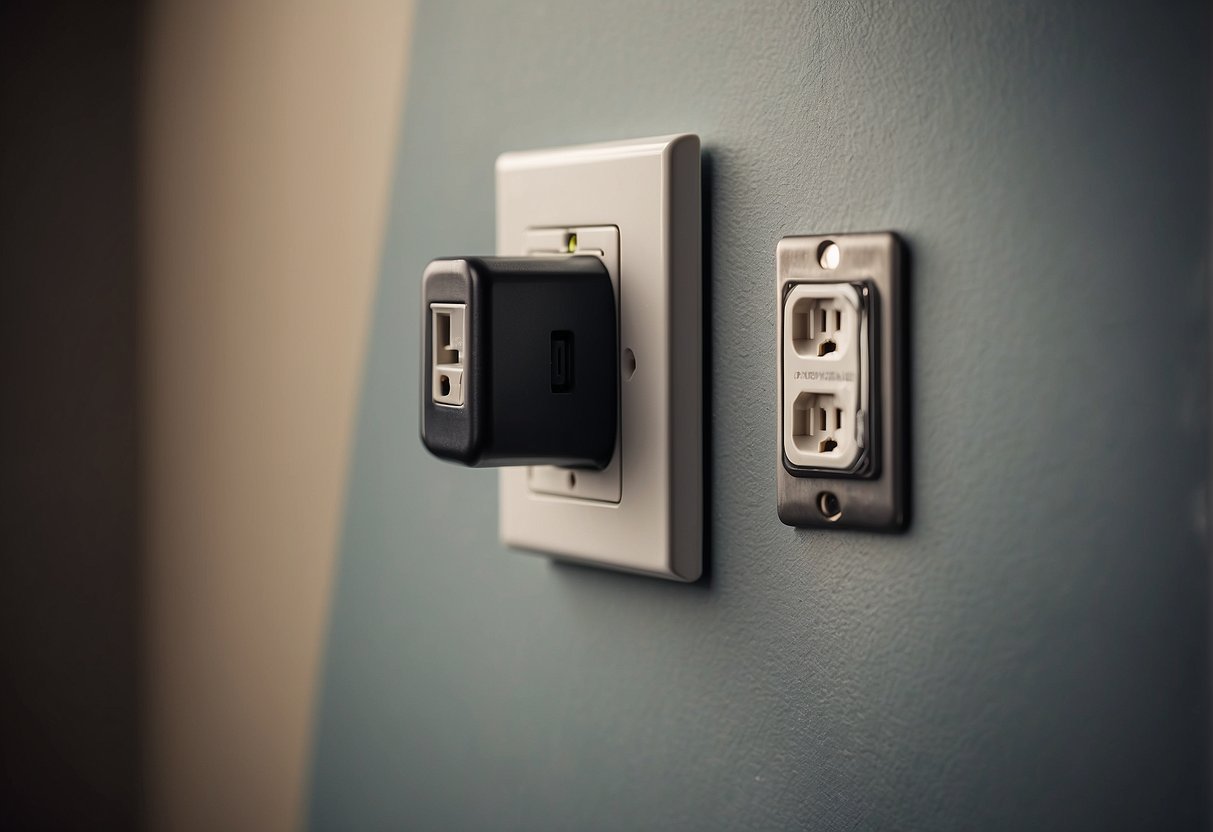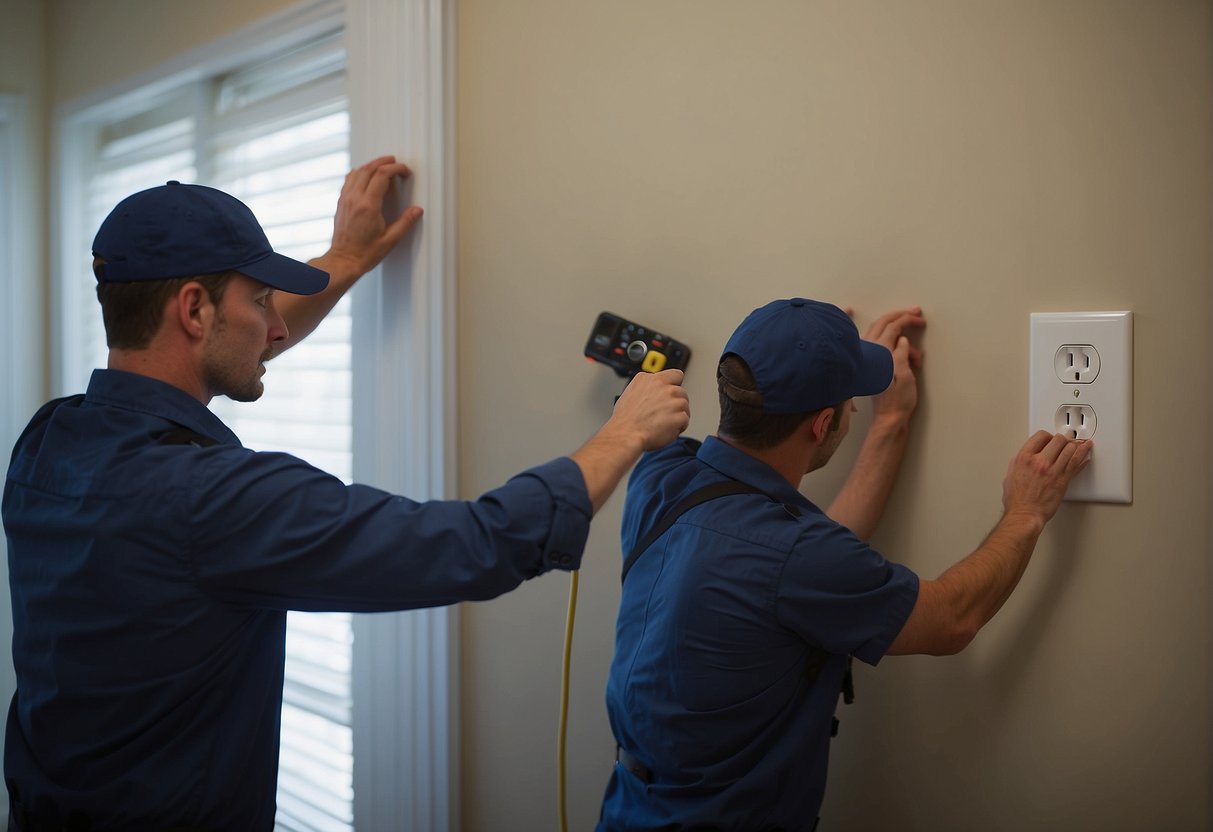As an electrician, I often encounter confusion between the terms “outlet” and “receptacle.” While the two terms are often used interchangeably, they have different meanings in the electrical industry. In this article, I will clarify the difference between outlets and receptacles, and provide information on their types, uses, and safety considerations.
Terminology and Definitions:
Before diving into the differences between outlets and receptacles, it’s important to understand the terminology and definitions used in the electrical industry. An outlet is a location on an electrical circuit where electricity is taken to supply equipment. A receptacle is a device installed at an outlet for the connection of a plug. In other words, an outlet is a location, while a receptacle is a device.
Types and Uses:
There are various types of outlets and receptacles, each with its own specific use. Common types of outlets include wall outlets, floor outlets, and ceiling outlets. Receptacles can be found in appliances, lamps, and other electrical devices. Understanding the types and uses of outlets and receptacles is crucial for proper installation and maintenance.
Key Takeaways
- Outlets and receptacles have different meanings in the electrical industry.
- There are various types of outlets and receptacles, each with its own specific use.
- Proper installation and maintenance of outlets and receptacles is crucial for electrical safety.
Terminology and Definitions
Outlet vs Receptacle
The terms “outlet” and “receptacle” are often used interchangeably when referring to an electrical connection point in a home or building. However, there is a subtle difference between the two. An outlet is the physical location where electrical power is accessed, while a receptacle is the device that provides the connection point for a plug.
A receptacle is designed to receive an electrical plug and make a safe electrical connection between the plug and the electrical system. It is typically a small, rectangular device that is mounted in an electrical box on a wall or other surface. The most common type of receptacle in use today is the NEMA 5-15R, which is used for standard 120-volt electrical connections in North America.
An outlet, on the other hand, is the physical location where the receptacle is installed. It may refer to a single receptacle or a group of receptacles that are installed together in a common location, such as a wall outlet or a power strip.
Common Electrical Terms
To better understand the terminology and definitions used in the electrical industry, it’s important to be familiar with some common electrical terms. Here are a few of the most important terms to know:
- Electrical system: The network of wires, circuits, and devices that distribute electrical power throughout a building or home.
- Device: Any electrical component that performs a specific function, such as a switch, receptacle, or light fixture.
- Connection: The point where two or more electrical conductors meet and are joined together to allow electrical current to flow between them.
- National Electrical Code (NEC): A set of safety standards and guidelines that govern the installation of electrical systems and devices in the United States. The NEC is updated every three years to reflect new technologies and safety requirements.
Understanding these terms and their definitions is essential for anyone working with electrical systems and devices. It can help ensure that installations are safe, efficient, and code-compliant.
Types and Uses
Standard Receptacles
As the name suggests, standard receptacles are the most common type of electrical outlet found in homes and commercial buildings. They are used to power a wide range of appliances and equipment, including lamps, computers, televisions, and kitchen appliances. Standard receptacles come in different shapes and sizes, but the most common ones are the 15A 125V duplex receptacle and the 20A 125V receptacle.
The 15A 125V duplex receptacle is the most common type of receptacle found in homes. It has two slots, one for the hot wire and one for the neutral wire, and a grounding hole. It is rated for 15 amps and 125 volts and is suitable for most household appliances and equipment.
The 20A 125V receptacle is similar to the 15A 125V duplex receptacle, but it is rated for 20 amps and is designed for heavier loads. It has a horizontal slot in addition to the two vertical slots and a grounding hole.
Specialized Outlets
Specialized outlets are designed for specific purposes and are not as common as standard receptacles. One example of a specialized outlet is the GFCI (Ground Fault Circuit Interrupter) outlet, which is designed to protect people from electrical shock. GFCI outlets are required in kitchens, bathrooms, and other areas where water is present. They have a test and reset button and are designed to shut off the power when they detect a ground fault.
Another example of a specialized outlet is the USB outlet, which is designed to charge USB devices such as smartphones and tablets. USB outlets have one or more USB ports in addition to the standard slots for the hot and neutral wires.
Finally, there are 30A 125/250V receptacles, which are designed for heavy-duty equipment such as air conditioners, dryers, and ranges. They have four slots, two for the hot wires, one for the neutral wire, and one for the grounding wire.
In conclusion, understanding the different types of outlets and receptacles can help you choose the right one for your needs. Whether you need a standard receptacle for your lamp or a specialized outlet for your USB devices, there is an outlet or receptacle that can meet your needs.
Electrical Safety
As an electrician, I know that electrical safety is of utmost importance when working with outlets and receptacles. There are several ways to ensure that your electrical devices are safe to use.
GFCI Protection
Ground Fault Circuit Interrupter (GFCI) protection is a vital safety feature that should be installed in areas where water is present. GFCI outlets are designed to shut off power when there is a ground fault, which can occur when electricity flows through a person’s body to the ground. This can happen when a person touches a live wire or a faulty device that is not properly grounded. GFCI protection is required by the National Electric Code (NEC) in kitchens, bathrooms, garages, and outdoor areas.
Circuit Breakers and Ratings
Circuit breakers are designed to protect electrical devices from overloading and short circuits. They are rated based on the amount of current they can safely handle. It is important to use the correct circuit breaker for your electrical device to ensure that it is safe to use. Overloading a circuit can cause the breaker to trip, which will shut off power to the device. Circuit breakers should be regularly checked to ensure that they are working properly and are not damaged.
In conclusion, electrical safety should always be a top priority when working with outlets and receptacles. GFCI protection and proper circuit breaker ratings are just a few ways to ensure that your electrical devices are safe to use. By following these guidelines and the National Electric Code, you can help prevent electrical accidents and keep your home or workplace safe.
Installation and Maintenance
As a licensed electrician, I understand the importance of proper installation techniques and regular maintenance of electrical outlets and receptacles. In this section, I will cover the best practices for installation and maintenance to ensure the safety and efficiency of your electrical connections.
Proper Installation Techniques
When it comes to installing outlets and receptacles, it is crucial to follow the building code and utilize the correct wiring techniques. The wiring should be done in a neat and organized manner, with no exposed wires. Additionally, it is important to ensure that the outlet or receptacle is properly grounded to prevent electrical shock.
Before installing a new outlet or receptacle, it is important to determine the appropriate utilization equipment that will be connected to it. This will help determine the correct voltage and amperage requirements for the outlet or receptacle. Failure to properly match the voltage and amperage can lead to damage to the equipment or even a fire hazard.
Troubleshooting Common Problems
Even with proper installation, electrical outlets and receptacles can experience problems over time. Some common problems include loose connections, tripped circuit breakers, and faulty wiring.
If you notice that your outlet or receptacle is not working or is sparking, it is important to immediately turn off the power and contact a licensed electrician. Attempting to fix the problem yourself can lead to further damage or even electrical shock.
Regular maintenance of your electrical outlets and receptacles can also prevent common problems from occurring. This includes checking for loose connections, ensuring that the wiring is properly secured, and replacing any damaged or worn components.
In conclusion, proper installation techniques and regular maintenance are crucial for the safety and efficiency of your electrical connections. If you experience any problems or are unsure about the installation process, it is important to contact a licensed electrician for assistance.
Regulations and Compliance
As a licensed electrician, I understand the importance of adhering to regulations and compliance standards set forth by the NEC and building codes. Failure to comply with these standards can result in fines, legal issues, and even safety hazards. In this section, I will discuss the regulations and compliance standards that govern outlets and receptacles.
NEC Standards
The NEC, or National Electric Code, is a set of standards that governs the installation and use of electrical systems in the United States. These standards are updated every three years to ensure they remain relevant and up-to-date with new technologies and safety concerns.
When it comes to outlets and receptacles, the NEC has several requirements that must be met. For example, all outlets in a dwelling unit must be tamper-resistant, meaning they have built-in shutters that prevent children from inserting foreign objects into them. Additionally, all outlets in wet locations, such as bathrooms and kitchens, must be GFCI protected to prevent electrocution.
Building Codes and Permits
Building codes are regulations that govern the construction, alteration, and maintenance of buildings. These codes are put in place to ensure buildings are safe for occupants and comply with relevant laws and regulations. When it comes to outlets and receptacles, building codes have specific requirements that must be met.
For example, building codes typically require a certain number of outlets per room based on the size of the room. Additionally, all outlets in a room must be grounded to prevent electrical shock. When installing new outlets or making alterations to existing outlets, a building permit may be required to ensure the work is done safely and complies with relevant codes and regulations.
In conclusion, complying with regulations and standards set forth by the NEC and building codes is essential when installing or altering outlets and receptacles. As a licensed electrician, I take these standards seriously to ensure the safety and well-being of my clients.
Frequently Asked Questions
What are the different types of electrical receptacles used in residential settings?
In residential settings, there are several types of electrical receptacles commonly used. These include 15-amp and 20-amp receptacles, GFCI (Ground Fault Circuit Interrupter) receptacles, AFCI (Arc Fault Circuit Interrupter) receptacles, and tamper-resistant receptacles. Each type of receptacle has its specific use and is designed to meet certain safety standards.
How do wiring practices differ between outlets and receptacles?
Wiring practices between outlets and receptacles are generally the same. Both require a hot wire, a neutral wire, and a ground wire. However, the main difference is that outlets are typically used for devices that are plugged in and unplugged frequently, while receptacles are used for devices that remain plugged in for long periods.
What is the National Electrical Code’s definition of a receptacle outlet?
According to the National Electrical Code (NEC), a receptacle outlet is defined as “a contact device installed at the outlet for the connection of an attachment plug.” In other words, a receptacle outlet is a device that allows you to plug in an electrical cord.
What distinguishes a lighting outlet from a receptacle outlet?
A lighting outlet is a device that is used to connect a light fixture. It is typically controlled by a light switch and does not have a receptacle for plugging in electrical devices. On the other hand, a receptacle outlet is used for plugging in electrical devices and does not have a switch to control the flow of electricity.
Can you list the various electrical outlet types found internationally?
Electrical outlet types vary by country. In the United States, the most common outlets are NEMA 5-15R and NEMA 5-20R. In Europe, the most common outlets are Type C, Type E, and Type F. In the United Kingdom, the most common outlet is Type G. Other countries have their own unique outlet types.
How do electricians typically refer to outlets in professional terminology?
In professional terminology, electricians typically refer to outlets as receptacles or electrical sockets. These terms are used interchangeably and refer to the same device that allows you to plug in an electrical cord.

Hi, I’m Sal Muller of Tooltrip.com. My DIY experience led me to understand essential power tools for home projects. Tooltrip.com guides enthusiasts and professionals in choosing right tools for any job. I provide concise top tool reviews for easier, efficient DIY.





